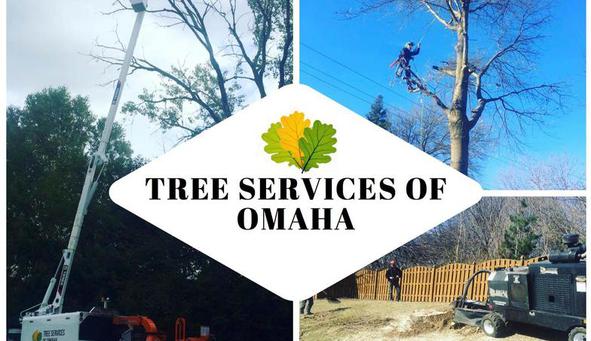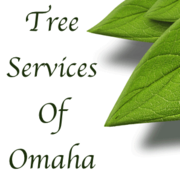Crabapple Tree Leaf Disease
by David Steg on 10/01/14
Importance
Apple scab is a very common disease, and one of the most aesthetically damaging diseases of several ornamental trees and shrubs in Minnesota. The main symptoms of the disease are leaf and fruit spots. Very susceptible trees become defoliated by mid-summer, which weakens the trees over time.
Apple scab infections are initially olive green with fringed edges
Pathogen and host plants
Scab is caused by the fungus Venturia inaequalis. This fungal pathogen infects several host species including crabapples and apples (Malus spp.), mountain ash (Sorbus spp.), pear (Pyrus communis) and Cotoneaster (Cotoneaster spp.). A unique trait of this fungus is that it is composed of several host specific strains that cause scab on one plant genus but not on any other. For example, the strain of V. inaequalis that infects mountain ash will only infect nearby mountain ash trees and will not infect crabapple trees. However, the fungal strain infecting either crabapple or apple can infect both apple or crabapple trees because the trees are in the same genus.
Identification
? Velvety, mostly round olive-green spots up to 1/2 inch across, with feathery-looking borders.
? With age, spots turn dark brown to black, enlarge and grow together, generally along leaf veins.
?
Older infections turn black, leaves turn yellow and fall off
? Infection on newly-forming leaves causes curling and puckering.
? Severely affected leaves yellow and drop by mid-summer.
? Infected fruit have olive-green spots that turn brown and corky with time.
? Severely infected fruit may be deformed and cracked.
Biology
The apple scab fungus overwinters on fallen diseased leaves. In spring, the fungus forcibly ejects spores into the air from the fallen leaves. These spores are carried by wind to newly developing leaves, flowers, fruit or green twigs. Spores need several hours of moisture on the plant surface in order to start new infections. Infections grow into spots or blotches that are capable of producing new spores within 9-17 days. These spores are spread by wind and splashing rain or irrigation throughout the canopy or to neighboring trees, initiating new infections. This cycle can repeat many times throughout the growing season whenever leaves remain wet for a sufficient number of hours. Warm rainy weather in the spring and summer results in repeated disease cycles and increases the severity of the disease.
Infected leaves scattered on the lawn below a crabapple tree
Severely infected leaves turn yellow and drop prematurely, weakening the tree. Several years of early leaf loss can result in decreased growth, reduced bloom and increased susceptibility to winter injury.
Management
Resistant cultivars
Disease resistance is the most effective strategy for managing scab of flowering crabapples. Several crabapple cultivars have been developed over the years that are hardy in Minnesota and include not only scab resistance but also beautiful flower color, graceful form and bright fruit that add to the element of winter interest. The following list highlights several cultivars that have shown strong resistance and are tolerant of Minnesota's low winter temperatures (Table 1).
Table 1. List of scab resistant crabapple trees that are hardy in Minnesota
Crabapple trees resistant to scab
'Adams'
'Adirondack'
'Baskatong'
'Bob White'
'Candymint'
Coralburst®
Christmas Holly™
'David'
'Donald Wyman'
Firebird®
Harvest Gold®
'Indian Magic'
'Indian Summer'
'Jewelberry'
Lollipop®
'Louisa'
Molten Lava™
M. floribunda
M. halliana var. parkmanii
'Prairie Maid'
'Prairiefire'
'Purple Prince'
Red Jewel™
'Robinson'
'Royal Beauty'
'Tina'
'Sargent'
'Silver Moon'
'Strawberry Parfait'
Malus x zumi
'Calocarpa'
Cultural control
? For control of apple scab on apple and edible crabapple cultivars, see the IPM guide for home apple growers.
? Rake up and destroy fallen leaves before the first snowfall to eliminate locations where the fungus can survive to re-infect the plant the following growing season.
? Alternatively, leaves can be chopped with a mulching lawn mower. Fall lawn fertilizer applications will further encourage the breakdown of these leaves. In mulched areas, urea can be applied to chopped leaf litter to encourage decomposition.
? Do not overcrowd plants – use size at maturity as a spacing guide.
? Prune crabapple trees so that the branches are spaced well enough apart from each other so that air can move through the trees and dry the leaves quickly.
? Remove vigorous upright suckers and water sprouts that have formed along the main trunk or within the canopy in order to improve air movement and sun penetration. This will help leaves to dry quickly after rain or dew.
Fungicides
Fungicides must be applied preventively to successfully manage apple scab. Because spores are released so early in the growing season, fungicide sprays must begin when the first green leaf tips emerge in spring. Sprays should be repeated until petal drop for crabapple. If the tree is healthy and free of leaf spots at this point, further treatments are unnecessary.
Check fungicide labels for the recommended spray interval. Most labels offer a range of days to wait before spraying again. (e.g. 7 to 10 days after spraying, you will need to spray again). Several factors affect what spray interval is most appropriate. In plantings where there was a severe scab infection the previous year, use the shortest interval. In plantings where scab has not been a problem, a longer interval will probably give adequate protection. In addition, if the weather is dry the longer interval is acceptable, whereas during rainy weather the shorter interval is preferable.
Once leaf spots appear in the tree, fungicides provide very little control of disease. There is no point in spraying an already heavily infected tree. Contact a certified arborist to apply fungicides to large trees. Chemical treatments are listed in the table below.
The name of the plant being treated MUST BE LISTED on the fungicide label or the product cannot be used! Some products are registered for use on ornamental crabapples but are not safe to use on crabapple or apple fruit intended for human consumption. Always completely read and follow all instructions on the fungicide label.
Active ingredient
Representative Trade Names*
Tebuconazole
Bayer Advanced Disease Control for Roses, Flowers and Shrubs
Myclobutanil
Spectracide Immunox
Captan
Bonide Captan
Chlorothalonil
Bonide Fungonil, Ortho Garden Disease Control
Propiconazole
Bonide Infuse
Mancozeb
Bonide Mancozeb
Sulfur/lime sulfur**
Safer Brand Garden Fungicide
Neem oil**
Garden Safe Fungicide3
Copper#
Bonide liquid Copper



